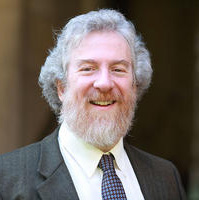
Torah—Vision Beyond the Text (Part 2)
May 8, 2013 By Samuel Barth | Commentary
Let us continue exploring, in these weeks before Shavu’ot, the metaphors of Torah in our liturgy. In the blessing immediately before the Shema’ in the morning service, we say “give light to our eyes through Your Torah” (ha’er eyneynu beToratekha) [Siddur Sim Shalom for Shabbat, 111], drawing upon the metaphor from the book of Proverbs that “Torah is light” (6:23). This connection of Torah (teaching) and light draws on a theme—common to many religions—that labels the attainment of ultimate understanding or a close or profound encounter with the Divine as “enlightenment.”
Read More
Torah—Vision Beyond the Text (Part 1)
May 1, 2013 By Samuel Barth | Commentary
In these weeks leading to the festival of Shavu’ot, designated by the Rabbis as Z’man matan Torateinu (Season of the Giving of Torah), let us look at the way that Torah appears in our liturgy. Torah refers, of course, to the humash—the Five Books of Moses—but the siddur makes clear that it is much more than that. In the preliminary service, the blessings for the study of Torah (Siddur Sim Shalom for Shabbat and Festivals, 63) are followed by verses from the humash, and these verses are followed immediately by selections from the Mishnah and Gemara, thus making it clear that these texts are Torah as well. The writings of the Sages (even to the present day) are not seen merely as commentary or amplification of Torah—rabbinic writings are also Torah, the “Oral” Torah.
Read More
Following Boston, Prayers for Healing
Apr 23, 2013 By Samuel Barth | Commentary
Once more murderous acts have literally blasted their way into our hearts and souls. Images from the bombs in Boston are seared into our minds and memories, and these depictions challenge us. Our faith in humanity is challenged no less than our faith in God.
Read More
Israel: Memory and Dreams (Part 2)
Apr 17, 2013 By Samuel Barth | Commentary | Yom Hazikaron-Yom Ha'atzma'ut
Following the transition from the pain-filled memories of Yom Hazikkaron (State of Israel Memorial Day) to Yom Ha’atzma’ut (State of Israel Independence Day), it is fitting to look closely at the prayer recited in so many synagogues (of all denominations) around the world: Tefillah l’Shalom HaMedinah (the Prayer for the State of Israel). There is a “legend” that the text was composed by Israeli Nobel laureate Shmuel Yosef Agnon, but in fact the text was composed by Israel’s Chief Rabbi Yitzhak HaLevi Herzog (1936–1949), and a critically important phrase was added by Agnon in a handwritten note.
Read More
Israel: Memory and Dreams (Part 1)
Apr 10, 2013 By Samuel Barth | Commentary | Yom Hazikaron-Yom Ha'atzma'ut
Yom Ha’atzma’ut, State of Israel Independence Day, is observed on Tuesday, April 16. It is not only a political and national celebration for the citizens of Israel and their supporters around the world, it is also a festival of the Jewish calendar. The Psalms of Hallel are recited, there is a special Torah reading, and there is an additional paragraph in the ‘Amidah of the Conservative Movement, in a style similar to Hanukkah and Purim (see the Rabbinical Assembly’s Siddur Sim Shalom for Weekdays, 42, 50, 343). So this day is not simply the Israeli equivalent of July 4—it is rooted, as is the State of Israel, in the ancient Jewish dream for the perfection of the world.
Read More
The Soul Is Pure
Apr 3, 2013 By Samuel Barth | Commentary
The “preliminary prayers” recited at synagogue each morning are rarely encountered; even if you arrive 15 minutes after the published starting time for a service that might last more than three hours, you will miss those first important words. This fills me with real sorrow, for within this section of Siddur Sim Shalom for Weekdays (4–13) are remarkable, beautiful affirmations and reflections. In previous weeks, we looked at Adon Olam, focusing especially on the way the poet entrusts body and soul to God each night. So, in the morning, it is natural to give thanks for one more day of life, and to reflect on who we are as human beings, composed of body and soul.
Read More
Isaiah: Visions and Wellsprings of Salvation
Mar 25, 2013 By Samuel Barth | Commentary | Pesah
It is often interesting to look closely at the haftarot (readings from the Prophets), and wonder about the juxtaposition of texts, themes, and ideas; what is this text looking to tell us or provoke/inspire within us?
Read More
Approaching Pesah, Part 2: Who Are the Children at the Seder?
Mar 20, 2013 By Samuel Barth | Commentary | Pesah
Let me offer a few thoughts on the part of the seder that has continually enchanted me since I was a child. The Haggadah presents four “types” of children, labeling each and offering directives to the parents on how to respond to each type. This is based upon four verses in the Torah that instruct the Children of Israel to explain (to their children) the rituals of Pesah. The Haggadah assumes that if something is repeated four times, with different language, that there must be a reason: that there are different types of children, each needing a different response.
Read More


